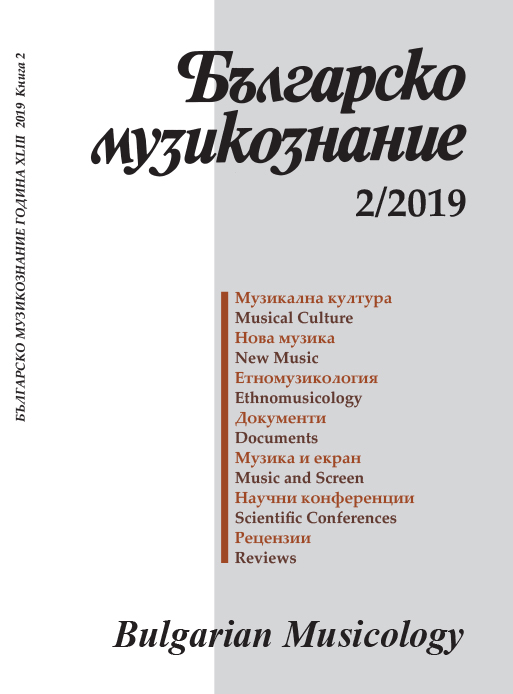Взаимодействия между полетата на музикалната cамодейност и на професионалните музиканти между есента на 1954 и 1960 година
Interactions between the fields of amateur music activities and professional musicians between autumn 1954 and 1960
Author(s): Goritza Naydenova, Goritza Naydenova, Goritza NaydenovaSubject(s): History, Fine Arts / Performing Arts, Music, Local History / Microhistory, Recent History (1900 till today), Post-War period (1950 - 1989), History of Art
Published by: Институт за изследване на изкуствата, Българска академия на науките
Summary/Abstract: The paper presents a particular stage in a more extensive study seeking to elucidate national amateur music and art-related activities with reference to folklore as a social field (according to Bourdieu). The period under consideration is between 1954, when the Peoples’ Art Central House (PACH) was established, and 1960, when the earliest folk fairs were held to mark a new stage in the relationship between folklore and amateur art activities. The article seeks to outline the relations surfacing at that time between the wider social field of amateur music making and various subfields of professional music activities: 1. Interactions with composers (forming a group of ‘composers for the amateur activities’ arising from the need to develop repertoires and help amateur composers); 2. Interactions with professional performers (as a result of requirements to constantly improve the performance: patronage of amateur groups by professional ones; amateur groups led by young professional conductors; paid professional performers joining amateur groups); 3. Interactions with professional performers and musicologists in the area of training (PACH’s unclear strategy for coaching activities is traced using the Centre’s didactic publications in its journal, namely Amateur Art Activities, and so is the information about the seminars and courses). The relationship between these two social fields in the period was beneficial to the professional realm, which at the time was also in a phase of constituting, establishing and legitimating composers (in parallel with the Union of Bulgarian Composers), providing conductors with professional experience so that they could serve as a vehicle for professionalizing amateur groups and including them into the expanding network of professional institutions, opening up opportunities for the realization of professional musicians (conductors, performers and musicologists) as educators who could train amateurs at all levels, and not least, draw educated audiences to professional groups and performers.
Journal: Българско музикознание
- Issue Year: 2019
- Issue No: 2
- Page Range: 3-24
- Page Count: 22
- Language: English, Bulgarian
- Content File-PDF

